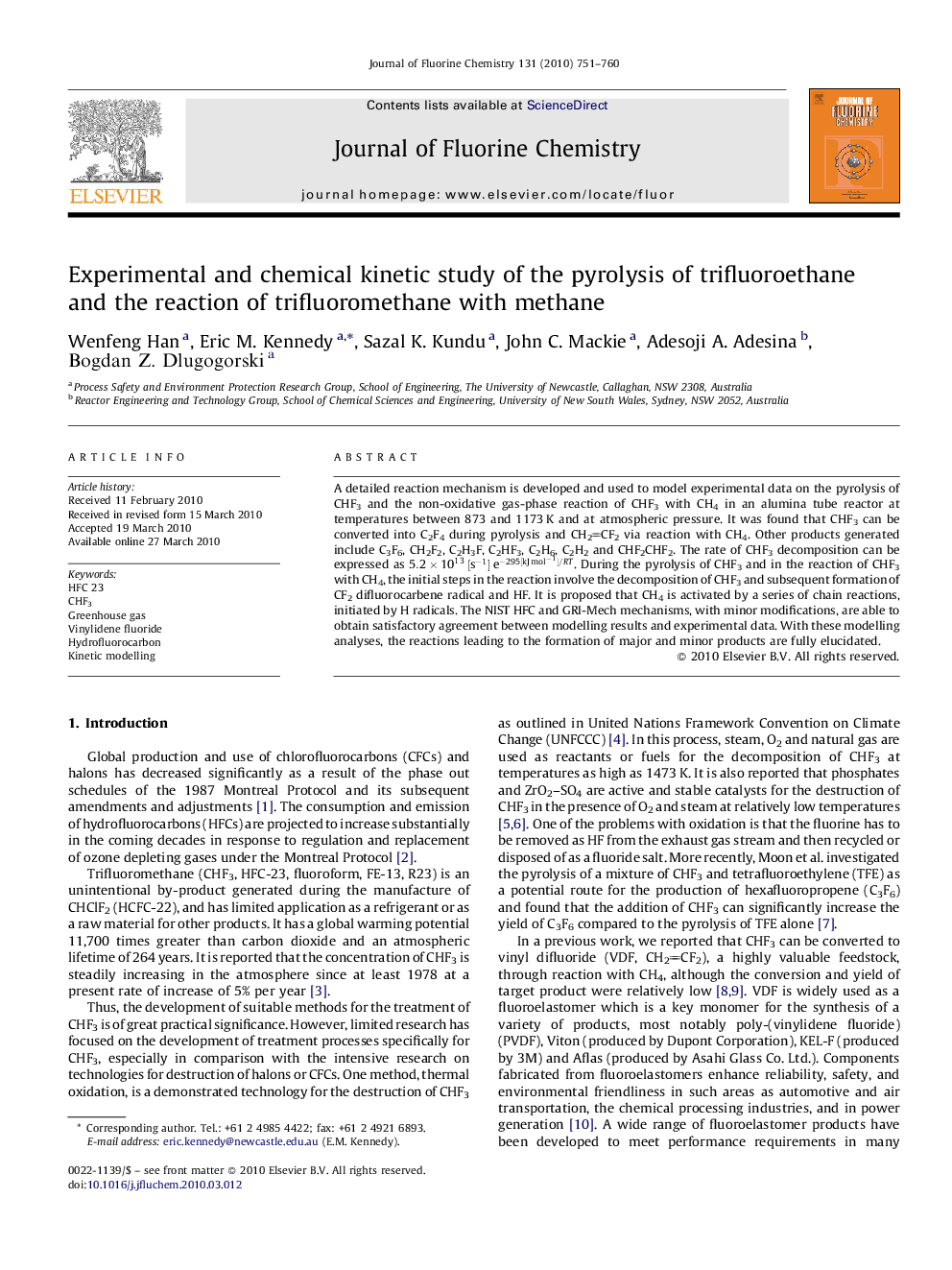| Article ID | Journal | Published Year | Pages | File Type |
|---|---|---|---|---|
| 1315290 | Journal of Fluorine Chemistry | 2010 | 10 Pages |
A detailed reaction mechanism is developed and used to model experimental data on the pyrolysis of CHF3 and the non-oxidative gas-phase reaction of CHF3 with CH4 in an alumina tube reactor at temperatures between 873 and 1173 K and at atmospheric pressure. It was found that CHF3 can be converted into C2F4 during pyrolysis and CH2CF2 via reaction with CH4. Other products generated include C3F6, CH2F2, C2H3F, C2HF3, C2H6, C2H2 and CHF2CHF2. The rate of CHF3 decomposition can be expressed as 5.2×1013 [s−1] e−295[kJ mol−1]/RT5.2×1013 [s−1] e−295[kJ mol−1]/RT. During the pyrolysis of CHF3 and in the reaction of CHF3 with CH4, the initial steps in the reaction involve the decomposition of CHF3 and subsequent formation of CF2 difluorocarbene radical and HF. It is proposed that CH4 is activated by a series of chain reactions, initiated by H radicals. The NIST HFC and GRI-Mech mechanisms, with minor modifications, are able to obtain satisfactory agreement between modelling results and experimental data. With these modelling analyses, the reactions leading to the formation of major and minor products are fully elucidated.
Graphical abstractA detailed reaction mechanism is developed and used to model experimental data on the pyrolysis of CHF3 and the non-oxidative gas-phase reaction of CHF3 with CH4 in an alumina tube reactor at temperatures between 873 and 1173 K and at atmospheric pressure. t was found that CHF3 can be converted into C2F4 during pyrolysis and CH2CF2 via reaction with CH4. Other products generated include C3F6, CH2F2, C2H3F, C2HF3, C2H6, C2H2 and CHF2CHF2. The rate of CHF3 decomposition can be expressed as 5.2×1013 [s−1] e−295[kJ mol−1]/RT5.2×1013 [s−1] e−295[kJ mol−1]/RT. During the pyrolysis of CHF3 and in the reaction of CHF3 with CH4, the initial steps in the reaction involve the decomposition of CHF3 and subsequent formation of CF2 difluorocarbene radical and HF. It is proposed that CH4 is activated by a series of chain reactions, initiated by H radicals. The NIST HFC and GRI-Mech mechanisms, with minor modifications, are able to obtain satisfactory agreement between modelling results and experimental data. With these modelling analyses, the reactions leading to the formation of major and minor products are fully elucidated.Figure optionsDownload full-size imageDownload as PowerPoint slide
